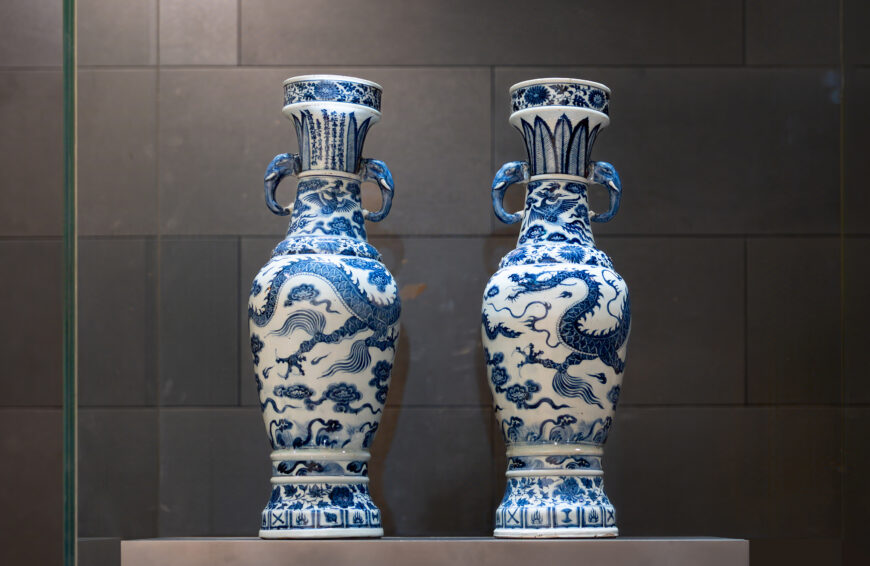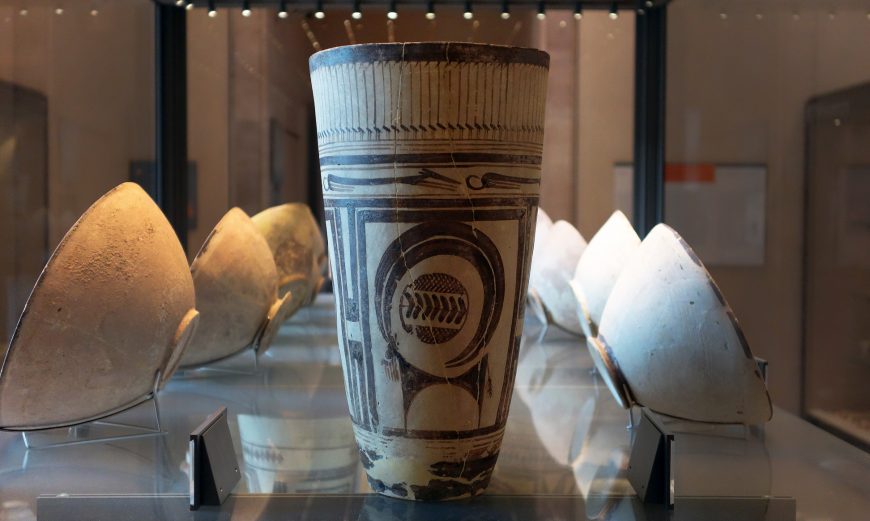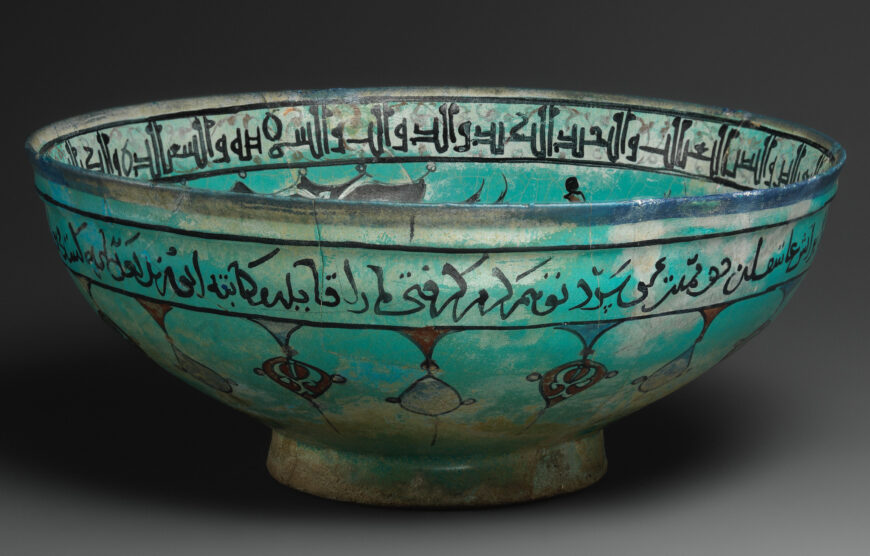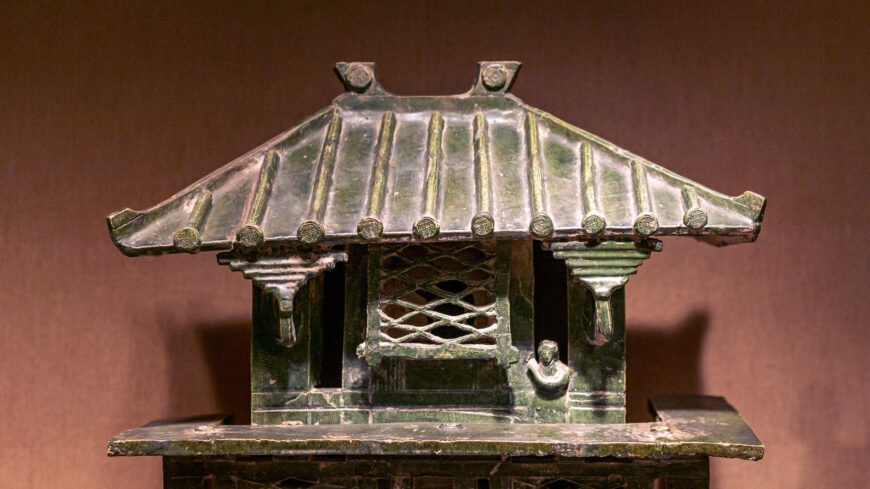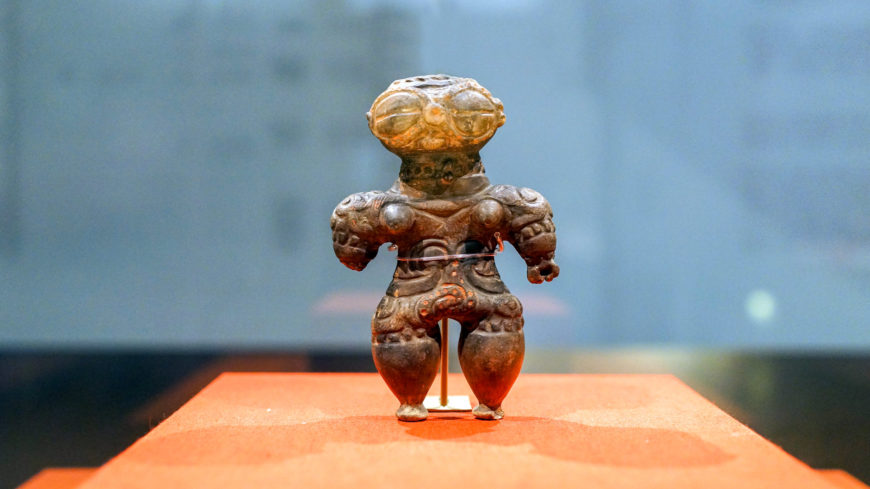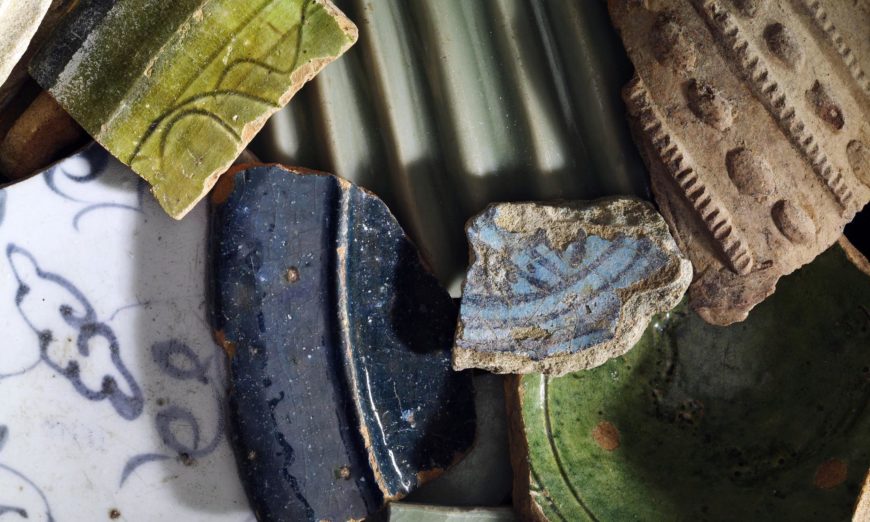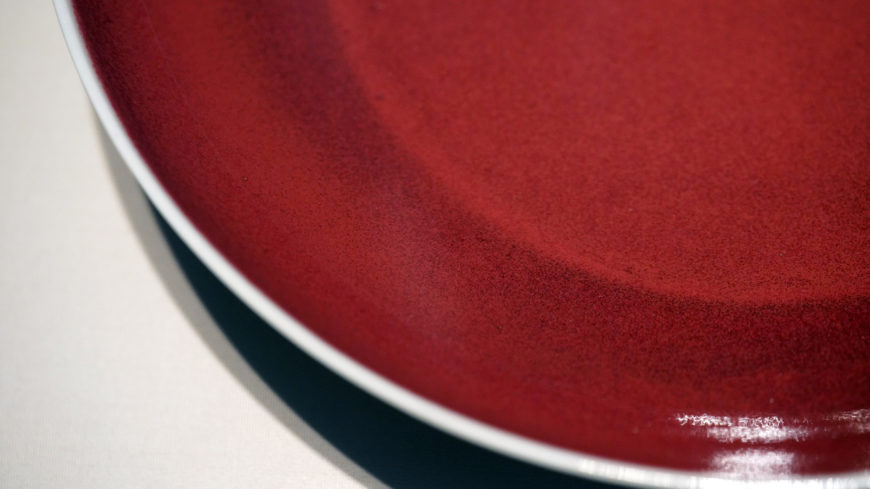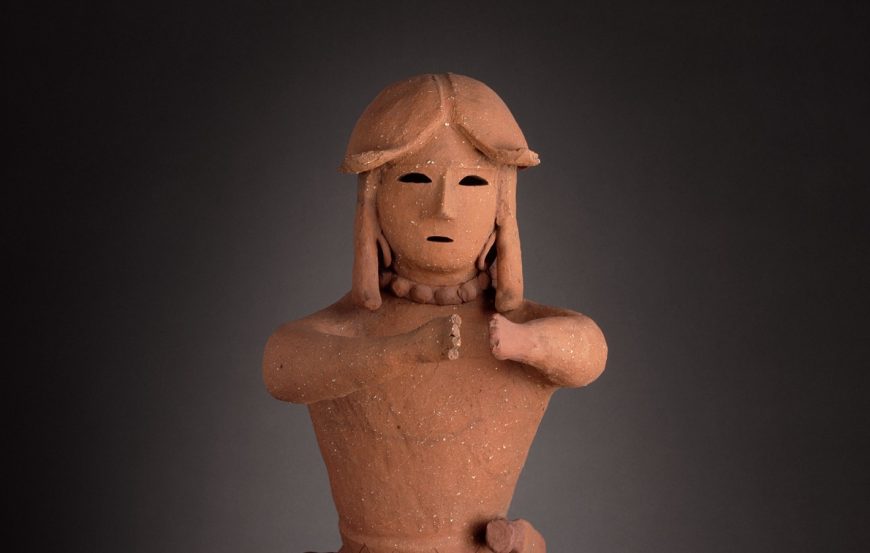Clog-Shaped Tea Bowl (Chawan) with Plum Blossoms and Geometric Patterns, early 17th century, Japan, stoneware with iron-black glaze, Mino ware, Black Oribe type; speakers: Dr. Sonia Coman and Dr. Steven Zucker
Oribe Tea Bowl
[0:00] [music]
Dr. Steven Zucker: [0:08] We’re on the second floor of the Metropolitan Museum of Art, in the galleries devoted to the arts of Japan. We’re looking at a small ceramic bowl, and it’s so unexpected for me. When I think about the ceramics of Japan, of China, of Korea, I think about impossibly thin-walled beautiful examples of porcelain, perfect geometries. This is anything but.
Dr. Sonia Coman: [0:26] We’re looking at an early 17th century Oribe bowl. It is very irregular in its shape. The rim is undulating. The roundness is distorted in various ways. We see various motifs on its surface as well as inside the bowl.
Dr. Zucker: [0:46] This is a hard piece of ceramic; if we dropped it on the floor, it would break. But it feels organic. It feels as if it’s still pliable, as if it’s still in the process of being formed.
Dr. Coman: [0:57] It preserves the ways in which the potters manipulated its material. While the bowl was still malleable, the potter would have distorted the perfect shape of a regular round bowl and created these indentations.
Dr. Zucker: [0:00] The willing and active deformation of perfect forms.
Dr. Coman: [1:21] The shape is known as a clog shape, reference to the aesthetic principle dominant in the early 17th century called wabi. Wabi refers to the simple and the austere. It refers to something that is beautiful without artifice, something artlessly beautiful.
Dr. Zucker: [1:43] In some ways, it’s a lie, because this bowl was once perfect, so the lack of artifice has been layered over the artifice, creating a hierarchy where this notion of wabi is paradoxically even more refined than the refined bowl from which this came.
Dr. Coman: [2:01] Exactly. The beauty of the bowl derives from playfully knowing that the artifice that created the bowl has the effect of beauty without artifice.
Dr. Zucker: [2:15] This paradox would have been especially apparent in the early 17th century, when this bowl was made, because this would have been seen in opposition to highly refined objects that would traditionally have been used for the tea ceremony. And so when objects like this were introduced into the tea ceremony, it was really revolutionary.
Dr. Coman: [2:32] Oribe ware created a revolution in Japanese ceramics. The name Oribe comes from Furuta Oribe, a warlord and tea master in late 16th century Japan.
Dr. Zucker: [2:54] It may be unexpected that a warlord could also be associated with the tea ceremony, but this was exactly the case.
Dr. Coman: [2:56] Inside the bowl, we see a stylized form of a flower, as well as a plum blossom.
Dr. Zucker: [3:09] The plum blossom has literary references and can specifically denote the idea of the ephemeral. A plum blossom [is] this perfectly beautiful thing that lasts only a moment.
Dr. Coman: [3:15] For the user of this bowl, who would have seen these motifs up close, these plum blossoms would have had all kinds of allusions to classical Japanese poetry. In combination with the geometric patterns, that would have created a very pleasant visual contrast, one that paralleled an array of poetic allusions. All for the enjoyment of the participant in a tea ceremony.
Dr. Zucker: [3:44] It’s extraordinary to look at in its complexity, its imperfection, its almost brutalized surface, but I think that that would be enhanced even more if I was holding it in my hand. I can imagine feeling a contrast between the smooth surface of the glaze and the rough quality of the clay underneath.
Dr. Coman: [4:01] Wabi can be considered integral to a larger concept called sabi. Sabi in Japanese may refer to the verb “sabu,” to wither. It can also refer to the adjective “sabishii,” which means lonely. Sabi is something austere, something isolated.
Dr. Zucker: [4:28] Maybe it’s appropriate the way that the Metropolitan Museum of Art has placed this bowl by itself, on a shelf, alone, austere, and beautiful in its imperfection.
Dr. Coman: [4:35] When you hold a bowl like this and rotate it, it is different bowls, different aesthetic solutions, all embedded into this one very rich object.
[0:00] [music]
| Title | Clog-Shaped Tea Bowl (Chawan) with Plum Blossoms and Geometric Patterns |
| Artist(s) | Unrecorded artist |
| Dates | early 17th century |
| Places | Asia / East Asia / Japan |
| Period, Culture, Style | Azuchi-Momoyama period |
| Artwork Type | Ceramics |
| Material | Stoneware, Ceramic glaze |
| Technique | Wheel throwing |



